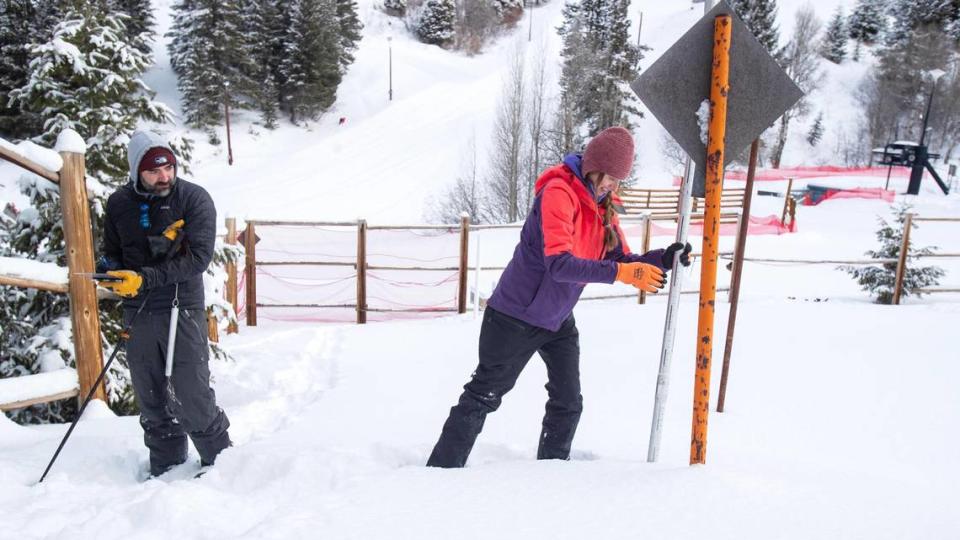The groundhog saw his shadow. Does that mean anything for Boise? Or for anyone?
America’s most famous — or maybe infamous — groundhog popped his head out Thursday, keeping the onlooking members of the Punxsutawney Groundhog Club still with bated breath. Whatever happened next with the revered rodent would swing the direction of the weather for the next six weeks.
Or so the legend goes.
Each year on Feb. 2, Punxsutawney Phil is transported to his spiritual home at Gobbler’s Knob in Pennsylvania and placed in his burrow. If Phil leaves his burrow and sees his shadow, we’re in for six more weeks of winter; if he doesn’t, warm weather and spring birds are just around the corner.
Good news for winter lovers, bad news for those who hate the cold: Phil saw his shadow.
Does that really mean much? Not if you pay attention to the actual weather and place faith in the scientists who study it. Their studies show that the groundhog has not been right even half the time.
This is the third straight year that Phil has predicted a long winter — in fact, he’s predicted a long winter 106 times out of the 126 times he’s been called upon.
Here's one for the statisticians .. the question is, do I feel lucky !? (I think the most amazing stat is how good I look for 136 years old) #GroundhogDay pic.twitter.com/ZPv24PAmrg
— Punxsutawney Phil (@PunxsatawnyPhil) February 2, 2023
But will Phil be right this year? And what about his past predictions? Let’s take a look.
Is Boise in for a longer winter this year?
According to the Climate Prediction Center, Phil is probably wrong about his part of the country — much of the eastern half of the United States will experience above-normal temperatures the next couple of weeks, but there will also be above-normal precipitation.
But Phil might actually be right for Boise.
Although National Weather Service meteorologist Sophia Adams told the Idaho Statesman on Thursday that models can change quickly, the Gem State is set to experience a 40-50% chance of below-normal temperatures and a 33-40% chance of above-average precipitation for at least the next month.
“For the month overall, it’s a little bit hard to say, but it is looking slightly more active from some of our long-term and long-range models,” Adams said.

A high-pressure system off the West Coast is preventing subtropical moisture from reaching Idaho, according to previous Statesman reporting, and that had been providing Boise with warmer temperatures.
Adams also noted that we’re still in a La Niña winter, which typically results in slightly cooler and wetter weather.
The historical average high for Boise in February is 46 degrees and the low is 29 — resulting in an average overall temperature of 37.5. So if models persist, expect slightly lower temperatures than that.
The average precipitation is about one inch, with 3.3 inches of snow. Boise could make some progress toward that this weekend, with the Weather Service forecasting 0.15 inches of rain — primarily on Saturday night — and a dusting of snow, with temperatures dipping to as low as 25 on Friday night.
https://twitter.com/NWSBoise/status/1620916295716982784?s=20&t=BM2q8VMeCUi5GnzFIZ4shA
How often is Phil correct for Boise?
OK, we’re not putting all of our stock into a rodent that’s apparently scared of its shadow.
But maybe he’s on to something lately.
Phil predicted longer winters in 2021 and 2022 — in 2021 Boise’s average temperature in February was 35.1 degrees and in 2022 it was 33, both below the historical average of 37.5.
He predicted an early spring in 2020, and Boise’s average temperature in February that year was 37.2. That year Boise then actually enjoyed a warmer-than-average March, by 0.2 degrees.
If the forecast for 2023 remains on track, Phil could be looking at a pretty healthy streak of fairly accurate predictions.
Should we listen to the rodent more closely?

 Yahoo Movies
Yahoo Movies 